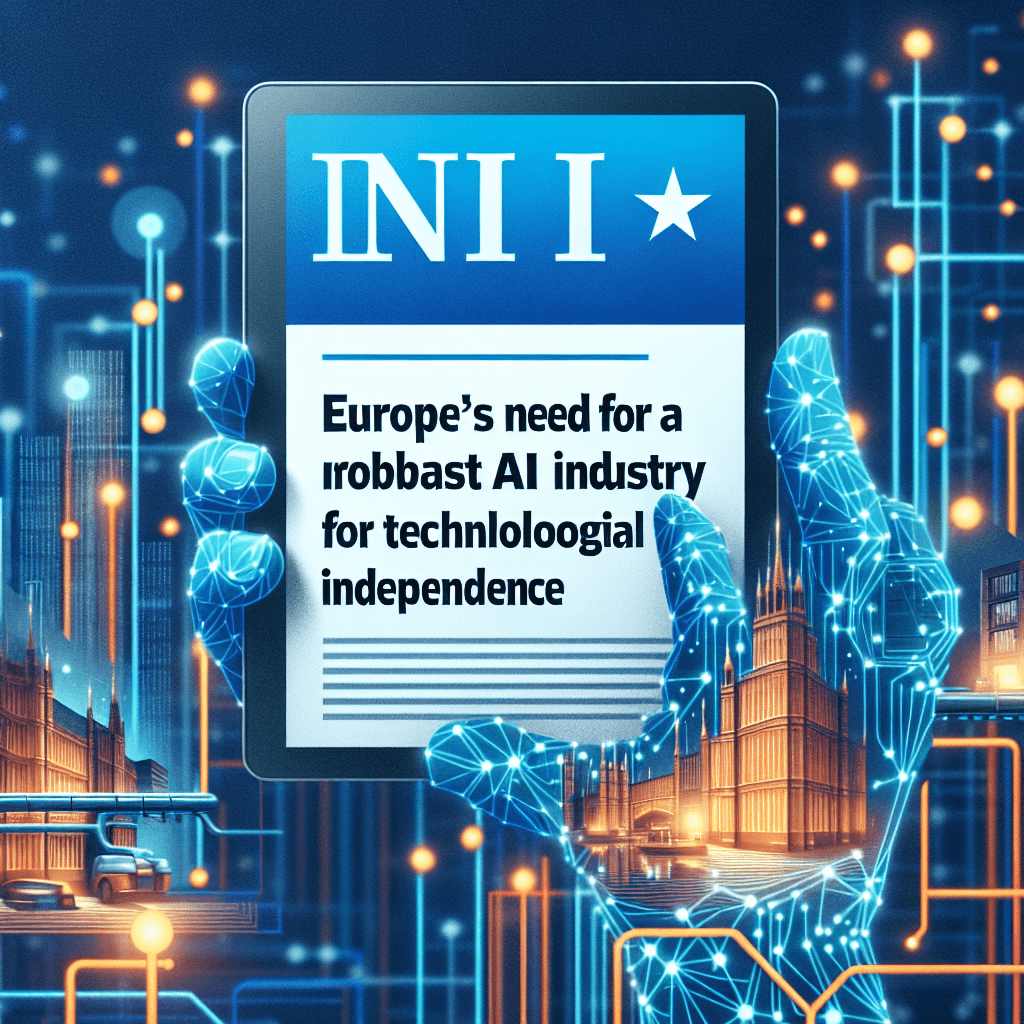Europe’s Need for a Robust AI Industry for Technological Independence

Introduction
Europe’s growing dependence on U.S. and Chinese technology suppliers has exposed critical vulnerabilities. Just as leaders have recognised the imperative to bolster defence capabilities—evidenced by the recent €150 billion rearmament plan—they must now confront a similar risk in the digital realm. Artificial intelligence underpins financial trading, energy grids, healthcare analytics and government services. Reliance on overseas AI providers creates a strategic single point of failure.
Lessons from Defence Autonomy
Europe has long debated defence sovereignty. The announcement of a planned €150 billion investment in European defence procurement signals a shift from dependency on U.S. platforms to home-grown systems. Yet the parallel in AI remains under-resourced. Europe cannot assume that the same level of urgency will spontaneously emerge for cutting-edge computing, data networks and advanced software.
Risks of AI Dependence
Much like a critical missile‐defence radar, an AI model can become indispensable overnight. If a dominant vendor were to restrict access—whether for regulatory, commercial or geopolitical reasons—European economies and public services could face catastrophic disruptions.
“Dependence on foreign AI platforms is a strategic liability. Europe must own the stack from silicon to solutions,” warns Dr Anna Keller, chief architect at EuroCompute Labs.
Technical Components of a Full-Stack AI Industry
Building a comprehensive AI ecosystem involves multiple layers:
- Semiconductor Fabrication: Leading‐edge nodes (5 nm, 3 nm) require EUV lithography tools from ASML and wafer fabs capable of >100 000 wafers/month.
- AI Accelerators: Development of GPUs, NPUs and FPGAs with performance targets of >100 TFLOPS per chip and power efficiency >100 GFLOPS/Watt.
- High-Performance Computing (HPC): Exascale‐class data centres with Infiniband 400 Gbps networking, liquid cooling and 100 MW+ power delivery.
- Software Stack: End-to-end toolchains including PyTorch, TensorFlow, ONNX runtimes and distributed training frameworks (Horovod, DeepSpeed).
- Foundation Models: Pre-training architectures on multi-language, multimodal datasets using >2 exaFLOP-years of compute.
Strengthening Financing and Regulation
Europe’s funding landscape is evolving with the EU Chips Act allocating €43 billion for semiconductors and Horizon Europe’s Digital Programme providing €2.8 billion for AI research. By comparison, U.S. pension funds deploy roughly 1.9% of assets to venture capital—100× the European ratio. Closing this gap requires:
- Streamlined cross-border VC frameworks to scale seed funding into late-stage rounds.
- Public-private co-investment vehicles (e.g., EIB, EIC) with >€10 billion annual commitments for AI startups.
- Regulatory harmonisation under the AI Act, expected to enter force in late 2024, to provide legal clarity without stifling innovation.
Talent Ecosystem and International Collaboration
Europe produces top AI talent—Paris, Berlin and Zürich host world-class AI labs—but must improve retention:
- Competitive compensation packages comparable to Silicon Valley.
- Expanded visa and residency schemes (e.g., EU Blue Card) for non-EU researchers.
- Pan-European research networks such as ELLIS and CLAIRE to foster collaboration and knowledge transfer.
“By unifying our research agendas and pooling resources, Europe can punch above its weight in AI breakthroughs,” says Pedro Ramos, director of the EU AI Joint Undertaking.
Public-Private Partnership Model
History shows major industries sprout through government-seeded initiatives. In the 1940s, U.S. defence funding catalysed Silicon Valley’s electronics sector. Today, Europe needs a similar approach:
- Mission-oriented programs targeting healthcare AI, autonomous mobility and climate modelling.
- Joint R&D bodies connecting the European Commission, national governments and leading enterprises.
- Shared innovation hubs with co-location of startups, academia and corporate research.
Strategic Implications for the Global AI Duopoly
Since 2012’s deep-learning breakthroughs, the U.S. and China have established a duopoly in AI capability. Europe’s entry as a credible third player would:
- Reduce concentration risk in model provisioning and cloud services.
- Foster geopolitical stability through diversified supply chains.
- Encourage ethical standards aligned with EU values.
Recent progress—France’s Mistral AI raising €113 million in Series A and Germany’s plan for a €500 million National AI Research Centre—demonstrates momentum.
Conclusion
President Trump’s unpredictability has inadvertently highlighted Europe’s reliance on external powers for both defence and digital sovereignty. The choice is clear: invest in a full-stack AI industry now or risk strategic subordination. By harnessing public funds, private capital, technical expertise and regulatory vision, Europe can secure its place alongside the U.S. and China—no longer as a follower but as a co-equal innovator.